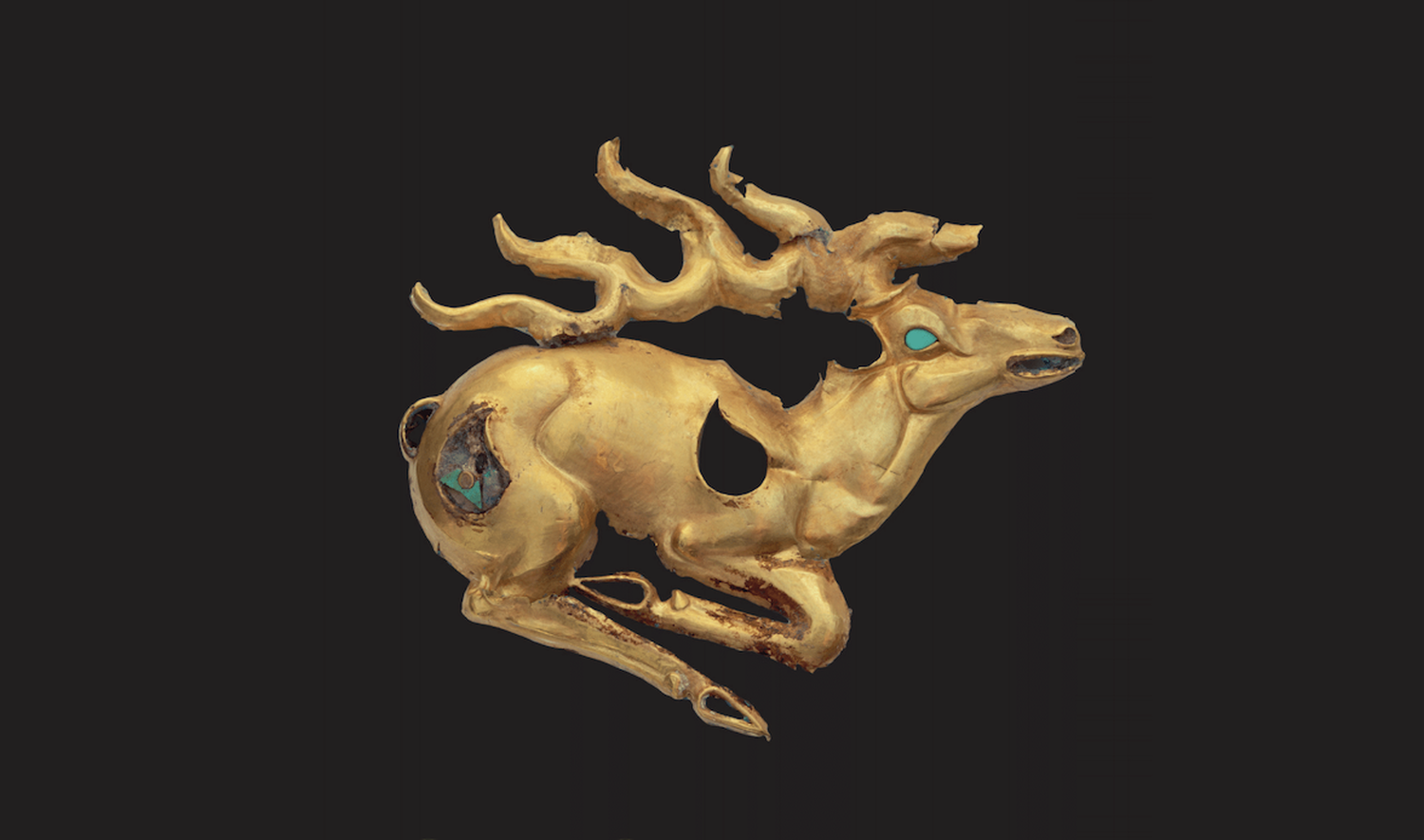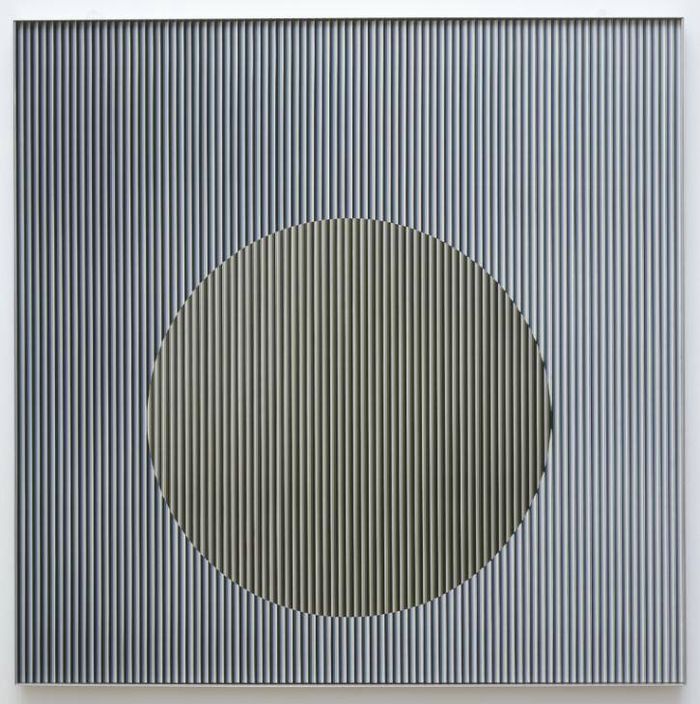A single weaving tablet — the last remaining traces of a life cut short. Over 2500 years ago in the Eleke Sazy valley of eastern Kazakhstan, a teenage girl was buried alongside a close male relative, likely her brother: an archer, himself no more than 18 years of age. While the young man’s burial — that of a Saka warrior — remained intact until its rediscovery in 2018, little is known about the girl, whose body was looted and bones scattered in the most violent of ways. A weaving tablet is all that we have left to locate her in the past. Displayed alone in the final section of the Fitzwilliam Museum’s Gold of the Great Steppe exhibition, it is the last object you’ll encounter before leaving the show.
“Dr Roberts discusses the choice to display objects exactly as they would have been arranged in the grave when first uncovered: “we wanted to convey the sense of discovery”
I had the wonderful opportunity to talk to the exhibition’s curator, Dr Rebecca Roberts. Reflecting on her choice to present the tablet in this way, Dr Roberts explained that, for her, the power of archaeology lies in its ability to tell stories. However, she also emphasised the importance of “having that moment of reflection on what we can’t say…those moments where we pause and remember our own biases, and whether those biases are coming from our own life experience or coming from the uncertainty in our data.”
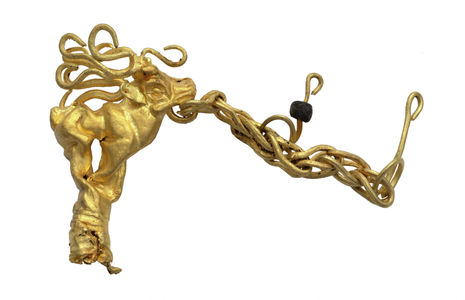
Keep this sentiment in mind as you enter the world of the Saka-Scythian people, brought to life in this exhibition, which showcases some of the most dazzling objects to have been unearthed in Kazakhstan in recent history. The Saka inhabited the eastern steppe of central Asia, near the mountainous Altai region, in the 1st millennium BC. They form part of a wider Scythian visual culture known for the early ‘animal style’, in which animals such as deer, bears, sheep and felines are rendered in fluid, abstract forms. The Saka’s material traces reflect the importance of their mythological belief system, which incorporated elements of shamanism, Buddhism and Zoroastrianism.
Since the time of 5th-century Greek historian Herodotus, author of one of the earliest written sources documenting the Saka people, an image of the Saka as a wild, uncivilised nomadic group has thrived. This exhibition spotlights archaeological discoveries that challenge such conceptions, highlighting the Saka’s creative and glittering engagement with their natural environment.
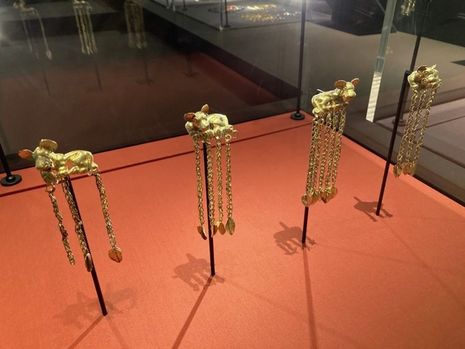
Much of the material on display has been excavated only in the last few years, in some cases even during the pandemic. Gold of the Great Steppe spotlights these new discoveries, fresh out of the ground, and the title certainly doesn’t disappoint. Gold torque necklaces, delicate animal figurines and gold beads so small their features can only be studied under a microscope twinkle in the dim light. All is set against the backdrop of the Great Steppe itself, as photographed by Yevgeniy Domashev. Large reproductions of Domashev’s dramatic photographs rhythmically divide the exhibition space, concealing and revealing objects that emerge in a “crescendo of gold” (Dr Roberts). Dr Roberts explains it was important for her in the curation of the show to evoke the viewer’s “phenomenological” experience of “being a human in the landscape,” with all its accompanying drama.
“What other hidden treasures and traces of our ancestors lie buried underground? And what will we leave behind?”
The excitement reaches a particular peak in the display of the young archer’s burial. Here objects are arranged exactly as found in the kurgan (burial mound), tracing the bones of the young warrior as his own family would have laid him to rest. The discovery of this burial is monumental; it is only the second Saka warrior burial to be found intact and undisturbed, having survived looters and natural threats for almost three millennia. Dr Roberts discusses the choice to display objects exactly as they would have been arranged in the grave when first uncovered: “we wanted to convey the sense of discovery.” Exceptionally exquisite is the image of a stag with lapis lazuli and turquoise inlays that would have adorned the ‘gorytos’ (combined quiver and bow case) found nearby. The stag’s exaggerated muscles and jaw, piercing blue eye and curling antlers render it a remarkable example of the Saka-Scythian ‘animal style’.
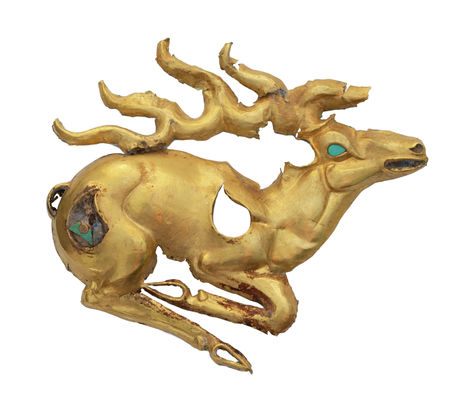
Reconstructions of the types of clothing worn by the Saka in life and death show the sartorial context of some of the objects on display, many of which would have been attached to garments. A particular highlight is the life-size Perspex model of a horse, outfitted in ritual trappings complete with a horned mask and ceremonial saddle. Horses would have been interred alongside humans in the kurgan, showing their importance to the Saka both in life — the Saka were known as formidable mounted warriors — and death. Horse-lovers of Cambridge, this exhibition is for you!
There are also three mannequins displaying human dress, whose outfits bring the material to life. Though now considered an outdated and unusual mode of display in the UK, this method is considered an important tool for education and museum display in Kazakhstan. Dr Roberts explained that it was important to respect and exchange alternative archaeological and curatorial methods as part of an open and collaborative transfer of knowledge involved in creating this exhibition.
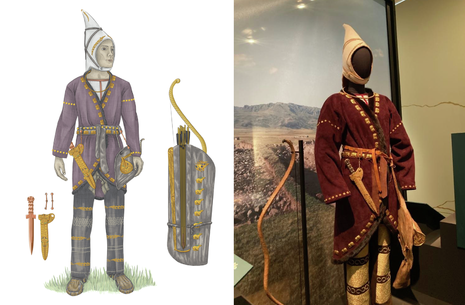
For almost three millennia, these exquisite materials remained hidden in the earth, lost in time. At some sites, excavation is expected to continue for at least another decade. This exhibition begs the question, what other hidden treasures and traces of our ancestors lie buried underground? And what will we leave behind? Thinking back to the unknown girl, we are reminded of the selective nature of history. Dr Roberts reminds us of the museum’s duty to acknowledge these gaps in the narrative: “one of the underlying themes that the Fitzwilliam is trying to engage with and use is, who’s truth are we speaking?”
The exhibition is entering its last weeks, ending on January the 30th, and I would highly encourage anyone who hasn’t been yet to go see this breath-taking material before it returns to its home country.
This interview and review took place in October 2021. Find more information about the exhibition here: https://www.fitzmuseum.cam.ac.uk/visit-us/exhibitions/gold-of-the-great-steppe

